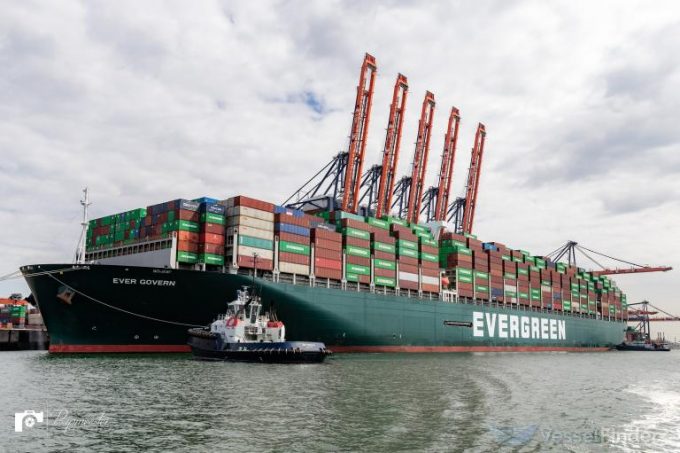Vessel juggling leaves ocean alliances short of Asia-Europe capacity
Despite the large tranches of new container shipping capacity hitting the water in recent months, ...

Taiwanese carrier Evergreen and its Ocean Alliance partners are redeploying ultra-large container vessels (ULCVs) from the Far East-North Europe trade to the Mediterranean, in response to the Red Sea crisis cutting off much of the region’s capacity.
Since the onset of Houthi attacks on commercial shipping, the Ocean Alliance’s main east Mediterranean hub of Piraeus, which previously served as a major waypoint call on Far East vessels en route to North Europe, has found itself the end point on Asia-Mediterranean strings, and capacity serving its regional hinterland has withered as a result.
Five 20,160 teu ULCVs, known as G Class, on order by Evergreen and alliance partners OOCL and Cosco, are due to enter the Ocean Alliance’s Asia-Mediterranean MD2 service over the next two months – Ever Glory, OOCL Indonesia, Ever Govern, Cosco Shipping Taurus and Ever Golden – joining the 10 vessels already on the service.
The move will involve sacrificing North Europe capacity currently deployed on the Ocean Alliance’s Far East-North Europe CES service, which previously had a call at Piraeus and will now deploy 13,800 teu vessels, to the Asia-Med MD2 rotation.
“Evergreen’s CES service (Ocean’s NEU7) used to call at Piraeus as its first European westbound port of discharge on the way to Antwerp, Hamburg and Rotterdam,” Alphaliner wrote in a new analysis today.
“This loop currently omits Piraeus for obvious reasons and since the Ocean Alliance recently also decided to close the third Far East-North Europe loop operated jointly by Cosco (AEU7) and OOCL (LL3) which also made wayport westbound call at Piraeus, the alliance partners needed alternatives for Asian exports to Greece,” it noted.
This lack of recent capacity has been reflected in container spot freight levels and this week’s Ningbo Containerised Freight Index climbed 5% for Ningbo-east Mediterranean shipments.
However, the capacity switch will have a knock-on effect for North European shippers, Alphaliner added.
“The exit of G-class ships from the CES loop, currently operated by only eight out of the 14 needed vessels, will render it difficult to maintain weekly sailings.”
The diversions from the Red Sea have had major ramifications for the allocation of ship tonnage, meaning that more carriers are resorting to using smaller vessels as feeders in the Med. According to Alphaliner, 2,700 teu-2,900 teu vessels – shunned until late 2023 – are now commanding two-year charters, to the delight of non-operating owners (NOOs).
Charter rates are also increasing for vessels between 1,700 teu and 5,000 teu.
It was only a matter of time, then, before larger vessels became involved in the Asia-Mediterranean trade.
“Large tonnage would also undoubtedly see punchier [charter] rates if such vessels were available for charter on a prompt basis,” said the Alphaliner report.
However, few NOO ships are available for charter, Alphaliner data indicates, and daily hire rates for all sizes have been climbing this year. In the 8,500 teu bracket, charter rates are more than double 2019’s, and substantially elevated even over 2020 levels.
But Alphaliner warned: “However, it should not be forgotten that a whopping 320 vessels, for just over 2m teu of new capacity, have yet to be delivered in 2024, and demolition remains at particularly low levels.”
Comment on this article